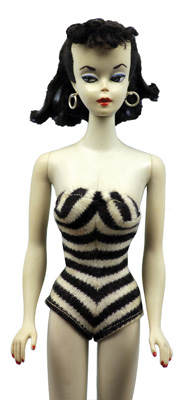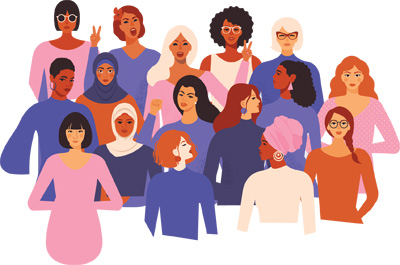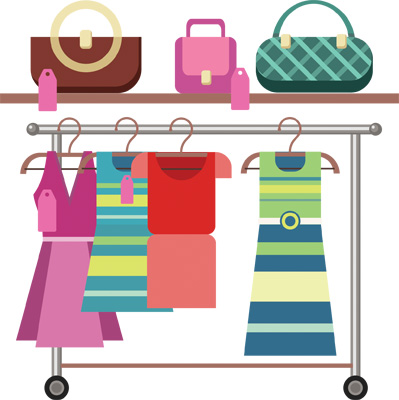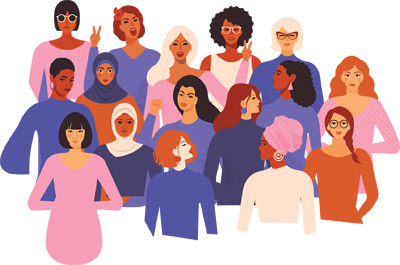Strange But True
Q. Did you or your sister own a Barbie doll when you were growing up? What about your daughter? Did you  know that Barbie had a secret former life as a “party girl”?
know that Barbie had a secret former life as a “party girl”?
A. Lilli started her life as a comic character in the German tabloid “Bild,” described as “an overly sexual starlet with revealing outfits, excessive makeup and hair that probably belonged best in a 1980s rock video,” says Dan Lewis on his “Now I Know” website. Based on Lilli’s popularity with readers, Bild make a plastic version of her with different removable outfits and hair color. The Bild Lilli doll wasn’t for kids, though; rather she was marketed for men as a gag gift, given, for example, at a bachelor party. When Bild Lilli’s popularity reached into the pre-teen set, the manufacturer made accessories, furniture, even dollhouses, much to the young owner’s delight.
When businesswoman Ruth Handler and her family visited Germany, she encountered the Bild Lilli doll that was remarkably like the plastic, adult-bodied doll that she’d envisioned a few years earlier for her pre-teen daughter Barbara. But her husband Elliot, co-founder of Mattel, had rejected the idea, “believing that parents wouldn’t want to purchase a curvaceous, overtly sexual toy for their kids.” Wrong—as Bild Lilli had clearly demonstrated.
Mattel launched its original Barbie doll in 1959, similar to its German predecessor but with paler skin and less makeup. Production of Bild Lilli ended in 1964, as Barbie’s popularity grew. “According to the BBC (as of 2006), ‘three Barbie dolls are sold every second.’”
Source: Bill Sones and Rich Sones, Ph.D.
The Pink Tax Blues
 Whether it’s dry cleaning, toys, razors or shampoo, women pay more for gender-specific items than men. The Pink Tax, named because of the color of products directed towards females, refers to the price difference for female-specific products compared with gender-neutral items, or those marketed towards men. In a study by the New York City Department of Consumer Affairs, nearly 800 products from more than 90 brands were checked for price differences in items marketed to different genders. On average, products for women or girls cost 7 percent more than comparable products for men and boys.
Whether it’s dry cleaning, toys, razors or shampoo, women pay more for gender-specific items than men. The Pink Tax, named because of the color of products directed towards females, refers to the price difference for female-specific products compared with gender-neutral items, or those marketed towards men. In a study by the New York City Department of Consumer Affairs, nearly 800 products from more than 90 brands were checked for price differences in items marketed to different genders. On average, products for women or girls cost 7 percent more than comparable products for men and boys.
Here are a few examples:
Apparel. Girls’ clothing cost 4 percent more than boys, and women’s clothing cost 8 percent more than men’s. A side-by-side comparison of red, short-sleeve polo shirts used as uniforms showed a $2 difference despite there being no obvious difference in style or quality. Both came from the same retailer.
Toys. Girls’ toys and accessories cost an average of 7 percent more than boys’ toys. Separately,  a side-by-side comparison of two Radio Flyer My 1st Scooters showed this: A red scooter cost $24.99 and a pink scooter cost $49, despite them being identical in all other ways.
a side-by-side comparison of two Radio Flyer My 1st Scooters showed this: A red scooter cost $24.99 and a pink scooter cost $49, despite them being identical in all other ways.
Personal care. Women’s personal care products also cost 13 percent more than men’s, according to the department’s study.
There can be reasons to explain the differences. Service providers say that women’s dry cleaning and haircuts tend to be more labor-and-time intensive, which is why women are willing to pay higher prices. Dry cleaners who use pressing machines, traditionally built for men’s shirts, need to hand press women’s shirts, a more labor-intensive, and costly, process. Women’s clothing, often smaller and tapered, are typically not suited for these machines. Unisex machines exist at half the price of man-sized machines, but press fewer items of clothing per hour.
www.usatoday.com




